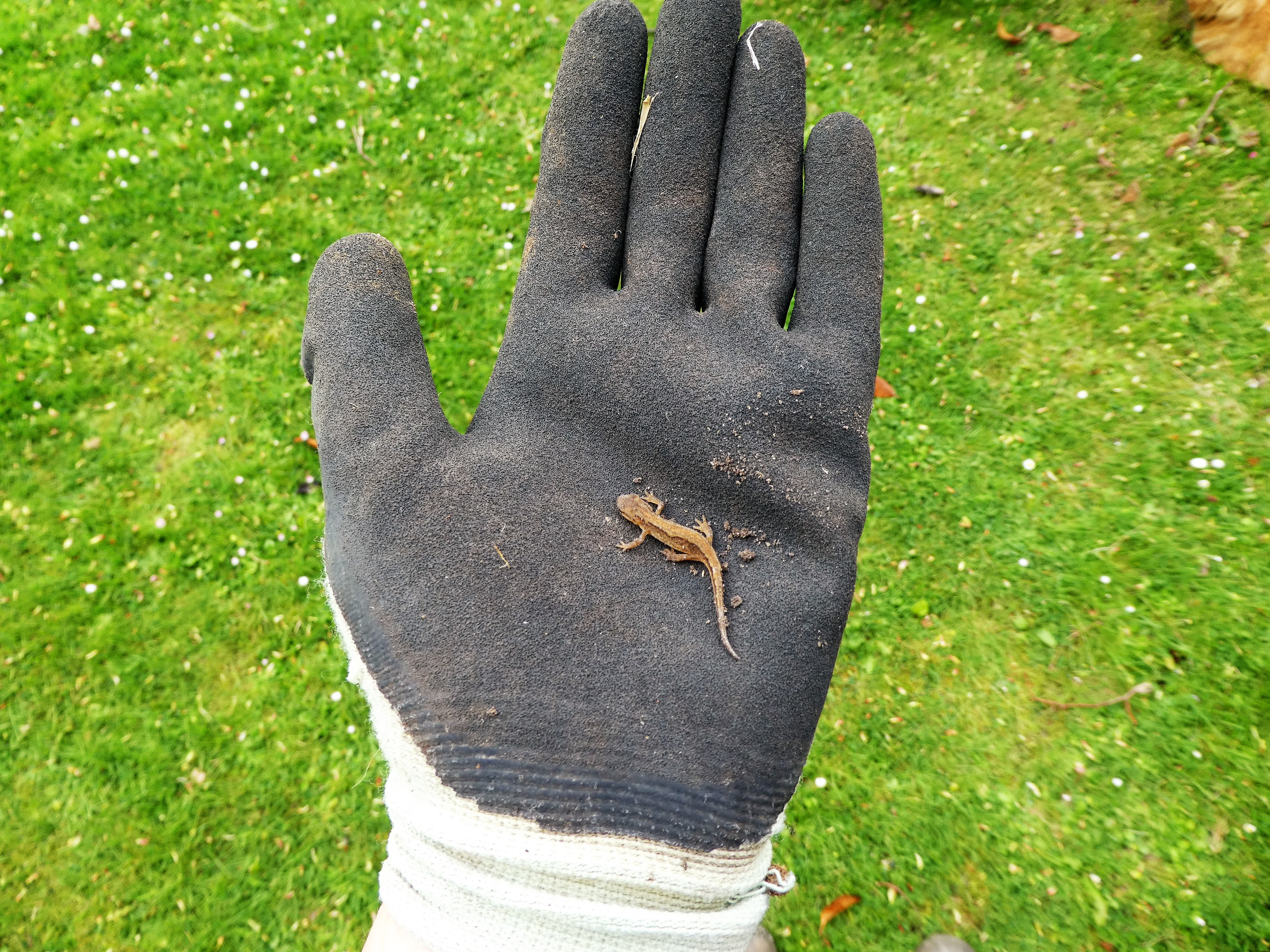The pond had been seriously overgrown. Small pockets of water surrounding a thicket of rushes. With a carving knife and some sheer brute force, over two thirds of the pond was liberated last autumn, a good chunk of reeds still in situ but a reminder to ourselves to never let it get quite so bad again. The most impressive thing has been the speed with which nature has reclaimed the water. The ramshorn snails and pea mussels, water boatmen and diving beetles rapidly appearing from the cramped recesses of the pond.
Our greatest joy has been the return of the newts both common and more importantly the great crested newts. These magnificent amphibians (Latin name Triturus cristatus), are a protected species and the UK’s population are internationally important. They are about 15-20 cm long, almost black in colour, with spotted flanks and a striking, orange belly. In addition the males have a long, wavy crest along the body and tail during the breeding season. While they like a clean pond they thankfully don’t mind a bit of weed, since having cleared the pond we currently work to keep the blanket weed under control as the pond re-calibrates.

As the pond matures so do the species that visit, many such as birds, hedgehogs and foxes for a drink but others like the grass snakes for a spot of lunch. Grass snakes swim surprisingly well and it is not uncommon to find this beauty circumnavigating the pond. Always very well aware of our presence, it is not unusual for a pond-weed covered head to pop up close to where we are dabbling in the pond, to cast a wary eye over what we are up to and whether we represent a threat.
While grass snakes are the easiest to spot, other reptiles are also to be found. Moving some large stones one day we came across a pencil thin young adder curled up in a crevice; an altogether more feisty reptile. What can only be described as a small bundle of hiss and spit certainly made its presence known. Indeed moving anything in the garden needs to be done with extreme caution and always lifted directly up not rolled, as you never know what is underneath. At this time of year young common lizards seeking out their insect prey are a regular find.

One thing all reptiles need is cover and while this abound around the edge of the garden, the middle represented a vast open plain of danger. Not just reptiles, but hedgehogs and other small mammals all appreciate blocks of cover. With this in mind we have allowed the lawn to do its thing in and around the apple trees. The fox has already developed a regular path through and other footpaths are developing, nightly rituals by as yet unknown until we get our camera set.

What has amazed me most is the interaction of the house sparrows with this wild zone. They love the long grass, flying in regularly, hanging of the grass seed heads and finding insects for their young. Indeed it seems for a healthy sparrow colony long grass is a must. By a piece of serendipity we have now added the last piece of the neighbourhood jigsaw for our booming sparrow troop.
